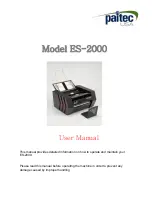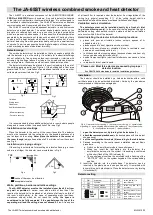
OPERATION
7. Check for bypass oper-
ation. Grasp the red
knob and turn it
counter-clockwise.
Listen for airflow. Turn
the knob clockwise to
close the bypass.
INSTALLING THE FIREHAWK PUSH-TO-CONNECT
REGULATOR
1. Grasp regulator and
orient regulator so that
the bypass knob is
pointing to the right.
2. Insert regulator into
facepiece adapter by
pushing inward.
3. Ensure the regulator locks into the facepiece.
4. Check proper engagement by pulling on the regulator
to ensure regulator is securely attached to facepiece.
DO NOT use the respirator unless the regulator is con-
nected properly. A regulator that is not installed correct-
ly can separate from the facepiece unexpectedly. Return
the respirator to an MSA trained or certified repairper-
son to correct the condition. Failure to follow this warn-
ing can result in serious personal injury or death.
5. Inhale sharply to start the airflow.
a. Check the bypass again by turning the red knob
counter-clockwise until increased airflow is felt.
Close the bypass.
The respirator must deliver air flow on demand. If it
does not, do not use the respirator. The respirator
must be checked and the condition corrected by an
MSA trained or certified repairperson before using it.
Failure to follow this warning can result in serious per-
sonal injury or death.
Note:
If the respirator passes all tests, the unit is ready to
use. These tests must be performed before entering the
hazardous atmosphere every time. If the unit fails to meet
any of the tests, the condition(s) must be corrected before
using the apparatus.
INSTALLING THE FIREHAWK SLIDE-TO-CONNECT
REGULATOR
1. Grasp regulator and
orient regulator so that
the bypass knob is
pointing to the right.
2. Slide regulator onto rail
(fast track) of facepiece
cover. Slide regulator
down the rail cover
until regulator stops.
3. Insert regulator into
facepiece adapter by
pushing inward.
4. Ensure the regulator locks into the facepiece.
5. Check proper engagement by pulling on the regulator
to ensure regulator is securely attached to facepiece.
11
TAL 903 (L) Rev. 1 - 10063148










































